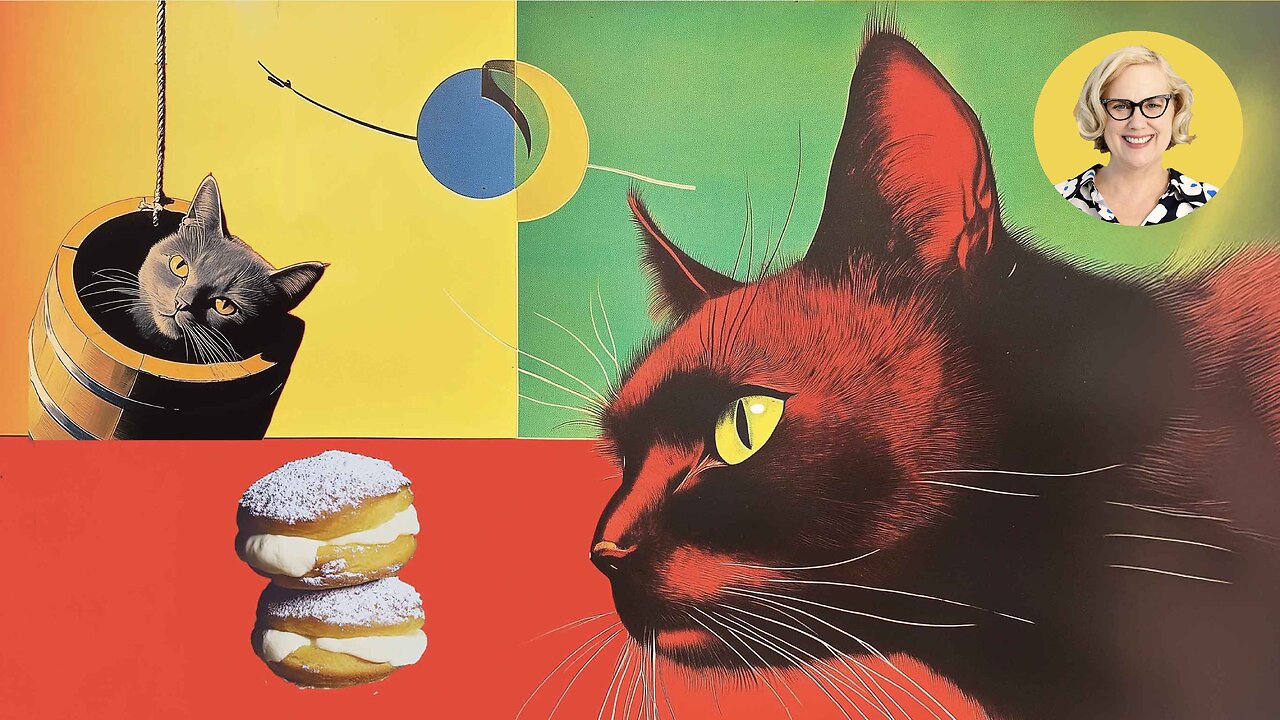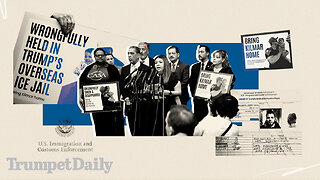Premium Only Content

Fastelavn in February, The Cat in the Barrel, and the Absence of Faith
One of the more unusual Danish traditions is Fastelavn, a pre-Lenten celebration similar to Carnival or Mardi Gras. Historically, it involved a practice that seems shocking today—placing a live cat in a barrel, hanging it up, and hitting it with sticks until the cat escaped.
While it sounds cruel by modern standards, this was done as a way to ward off evil, based on the superstition that cats—particularly black ones—were connected to misfortune. At the time, it was believed that driving out the cat would also drive out bad luck and disease.
Thankfully, this practice ended centuries ago. Today, Fastelavn is a fun and festive holiday, especially for children.
A Modern Celebration: Candy, Costumes, and Crowns
The cat in the barrel tradition still exists, but now it’s symbolic. Instead of a cat, the wooden barrel is filled with candy, and children take turns hitting it with a stick until it breaks open, much like a piñata. The child who delivers the final strike is crowned Cat King or Cat Queen and gets to wear a festive paper crown.
Children also dress up in costumes—similar to Halloween in other countries—and sometimes go door-to-door asking for treats while singing a special Fastelavn song.
Fastelavn Buns: A Sweet Tradition
No Danish celebration is complete without pastries, and Fastelavn is no exception. Fastelavn buns (fastelavnsboller) are light, flaky pastries filled with custard or cream and topped with frosting. They are delicious but famously messy—biting into one almost guarantees an explosion of filling.
Every year, bakeries across Denmark compete to make the best Fastelavn bun, and the prices often reflect this. Discussing which bakery offers the best version has become an annual topic of small talk among Danes.
The Party Stays, the Religious Meaning Fades
Historically, Fastelavn was tied to Lent, a solemn 40-day period of fasting and reflection leading up to Easter. Much like in Catholic traditions elsewhere, it was a time to enjoy one last indulgence before a season of restraint.
But in modern Denmark, Fastelavn has lost almost all religious significance. Lent is rarely observed, and few Danes associate the holiday with its Christian origins. This follows a broader trend in Denmark, where many traditional religious events have been adapted into secular celebrations.
For example, some Danish families now hold “name-giving ceremonies” instead of baptisms, and young people may choose a “non-firmation” instead of a religious confirmation. The cultural aspects of these traditions remain, but the religious elements have faded.
Religion in Denmark: A More Private Affair
Denmark is often ranked among the world’s least religious countries. While the vast majority of Danes are officially members of the Danish National Church, regular church attendance is uncommon.
For many Danes, religious belief is seen as a personal matter. Mindfulness and meditation have become more popular than traditional worship, and spirituality—if practiced at all—is often done individually rather than in a group setting.
While churches still play an important role in major life events—such as weddings, confirmations, and funerals—people who attend church regularly for personal faith are sometimes viewed with skepticism. There is a common assumption that religious belief is tied to conservative values, and some Danes are wary of those who openly discuss their faith.
A Changing Landscape: The Role of Religion in a Global Denmark
Ironically, despite Denmark’s strong international outlook, most of the world is religious or at least spiritually inclined. In that sense, Denmark—and much of Western Europe—stands out as an exception rather than the rule.
That said, this year there will be people in Denmark observing a fasting tradition—Danish Muslims celebrating Ramadan, which coincides with Lent in 2025.
While Fastelavn has become a lighthearted children’s holiday, it remains a reminder of Denmark’s evolving cultural landscape—where old traditions are adapted, religious roots fade, and new influences continue to shape Danish society.
-
 30:12
30:12
CatfishedOnline
1 day agoOnly Fans Model Drains Man's Money in Romance Scam!
34K11 -
 15:01
15:01
Shea Whitney
22 hours ago $3.41 earned20 *Stylish* AMAZON Closet Organization Ideas for 2025!
36K7 -
 16:37
16:37
IsaacButterfield
1 day ago $2.88 earnedFatTok Is Ruining Lives
24.3K25 -
 8:42
8:42
VSOGunChannel
17 hours ago $2.76 earnedDOJ Attacks the Gun Industry & ATF Gets a New Deputy Director
26.2K15 -
 59:47
59:47
Trumpet Daily
22 hours ago $3.93 earnedKilmar Abrego Garcia: Democrat Poster Child and MS-13 Terrorist - Trumpet Daily | Apr. 17, 2025
24.3K4 -
 8:59
8:59
MudandMunitions
19 hours agoThe Savior Equipment Range Bag: Worth the Hype or Overrated?
29.8K -
 3:06:16
3:06:16
Price of Reason
18 hours agoDESPERATE Gavin Newsom SUES Trump! Disney Fantastic Four to FLOP? Asmongold Faces BACKLASH Again!!
157K19 -
 3:48:12
3:48:12
Akademiks
11 hours agoDay 2/30. Drake Challenges UMG and calls them Desperate. Ye Backs Drake. Lil Wayne Dont Fw Superbowl
135K17 -
 8:06:34
8:06:34
MyronGainesX
1 day ago $29.95 earnedKarmelo Anthony Merch, Ashley EXPOSES Elon, Filipino President Punishes Vitaly, Iran War Pause!
102K18 -
 2:41:54
2:41:54
TimcastIRL
14 hours agoMASS SHOOTING At Florida State, Anti Trump Rumors ERUPT, MANGIONE EFFECT w/ Maggie Moda| Timcast IRL
263K176